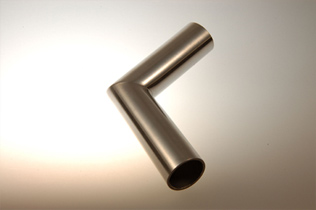
The "Sharp Frame"
A pre-bent pipe blank was inserted in a die and formed. The "mitred corner" has been created without cutting two tubes, fixturing and welding the seam, or metal finishing a weld joint further the radius in the angles is minimal.

A pre-bent pipe blank was inserted in a die and formed. The "mitred corner" has been created without cutting two tubes, fixturing and welding the seam, or metal finishing a weld joint further the radius in the angles is minimal.
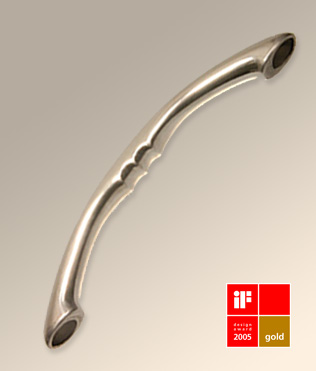
The aluminum blank for this handle was pre-bent, heated to approx. 500-600 °C by inductive heating, and then inserted into a tool cavity for final forming. Application of air pressure causes the starting tube to expand into the tool mold while more material is fed in. In this particular product, the middle was formed prior to the ends. One of the advantages of HEATforming is that time sequencing of the shape forming can be used when necessary. This added control allows HEATform to provide extreme geometries consistently without wrinkles and other transition defects.
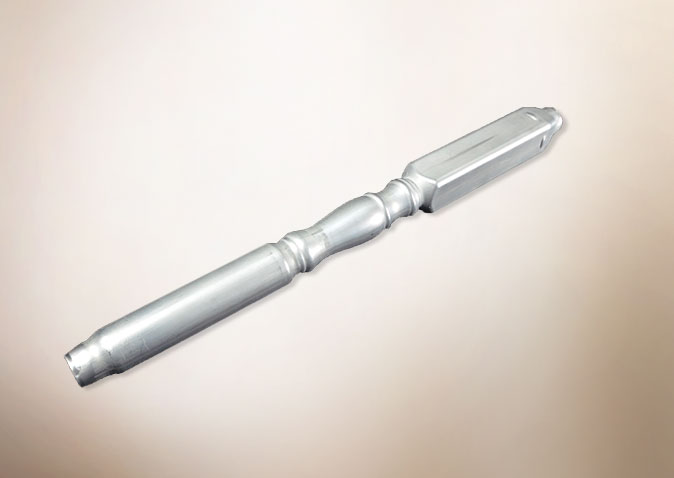
Decorative part illustrating a wide range of design and surface shaping capabilities.
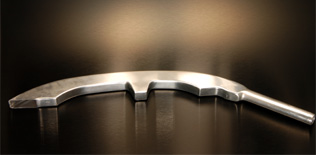
This roof rail geometry is created as a final product shape, eliminating a great deal of post assembly. In some cases, HEATforming is done in multiple steps. A standard tube was HEATformed into a T-shape. This was followed by a standard bend operation, and then the final HEATforming into the delivered geometry.
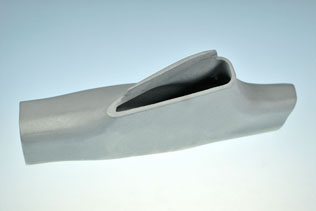
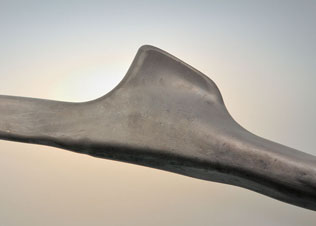
Connection joints for a B-Pillar (automotive industry) made of a high-strength aluminum alloy.
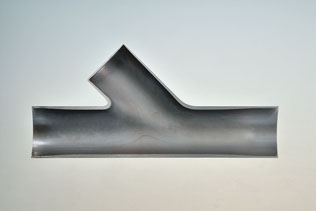
This Y-piece, made of AL 6061, is formed with a thin 0.8mm wall. Thin wall formations, desired by aerospace, are feasible with the HEATform process.
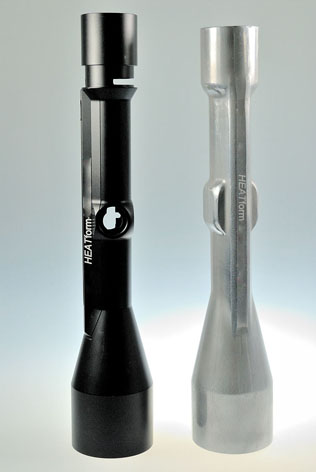
Example of a HEATformed blank for a gun sight (right), and the final product (left). The HEATformed blank led to an 80% reduction in the machining and cutting process. The original housing was machined from bar stock.
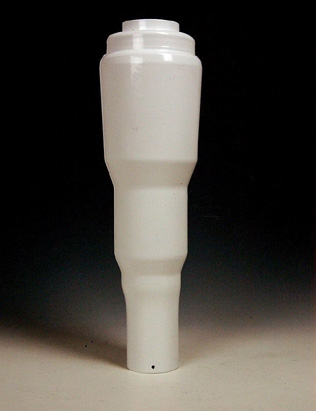
The aluminum blank (formed in 5000, 6000, and 7000 series alloys) was heated to approx. 500-600 °C by inductive heating. The HEATform cycle time for this example part is approx. 22 seconds, hit to hit. Depending on the pressure capability of the machinery used, this part can be formed faster than the 22 seconds cycle time. Machine capability is typically matched to the upstream and downstream operation balance of labor availability and linked machine processes.
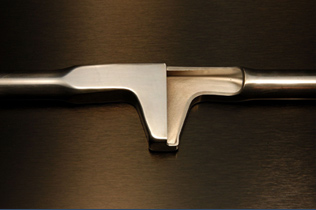
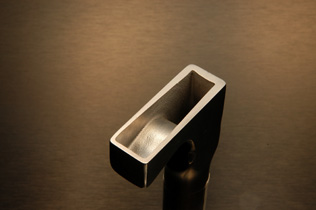
The geometry of these parts mainly serve the purpose of demonstrating the values of strain that can be attained. The aluminum tube to be formed was heated to approx. 500-600 °C by inductive heating and then inserted into the tool mold...
... The tube was then expanded via axial cylinders and simultaneous introduction of air (at a pressure of 20 – 100 bar) and additional material was fed into the area of maximal forming until the forming process of the T-piece was complete...
... The cycle time is approx. 17 seconds for manual operation, but can be reduced even further by automatic loading and unloading.
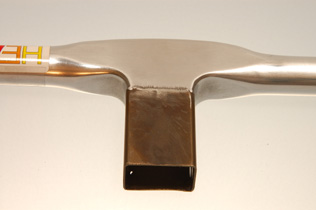
Dissimilar or like materials can be mechanically joined in the HEATforming step. In this particular case, a stainless steel tube was inserted into the tool prior to forming, and an aluminum tube was expanded into the steel tube creating a mechanical lock.
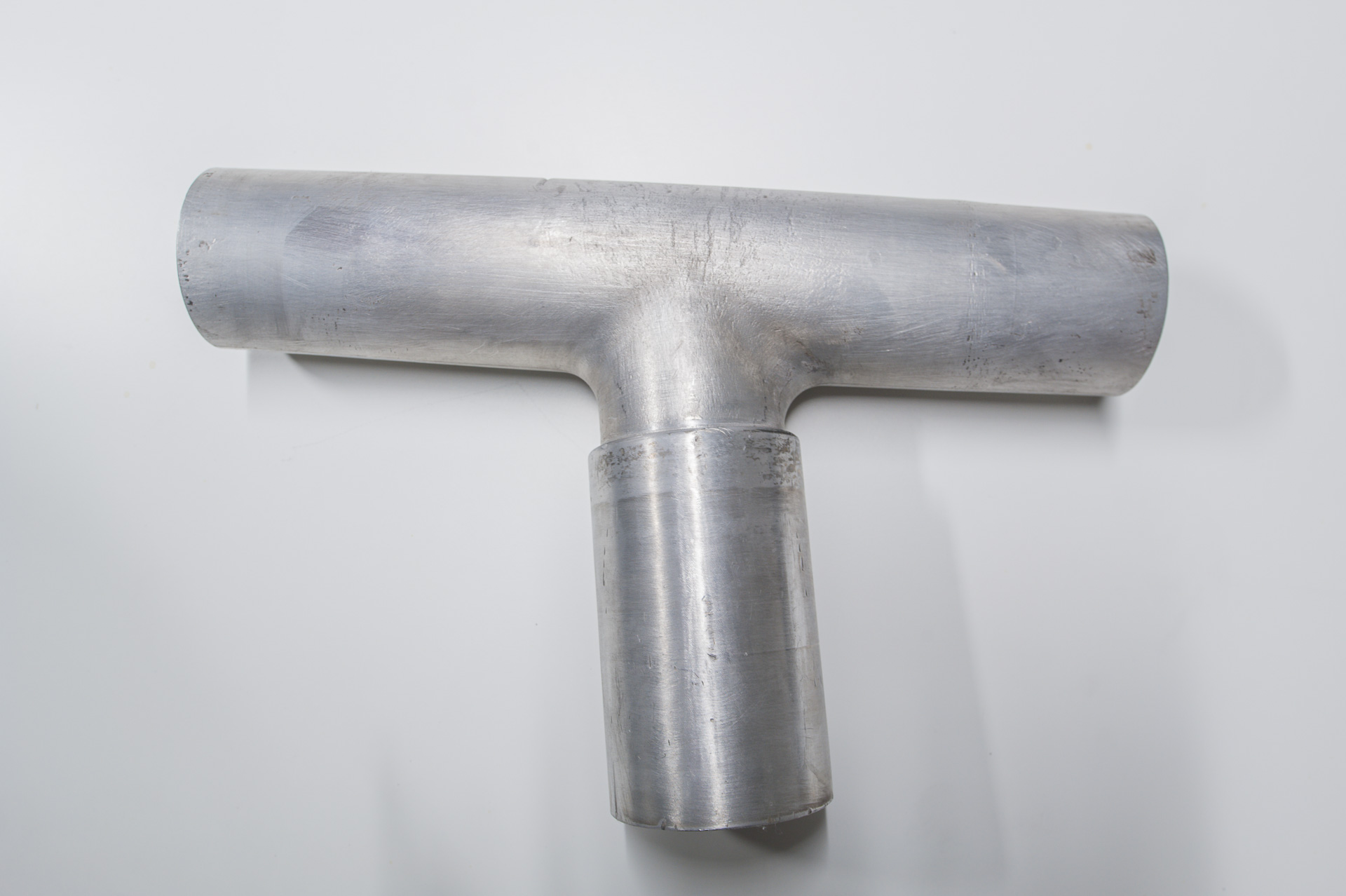
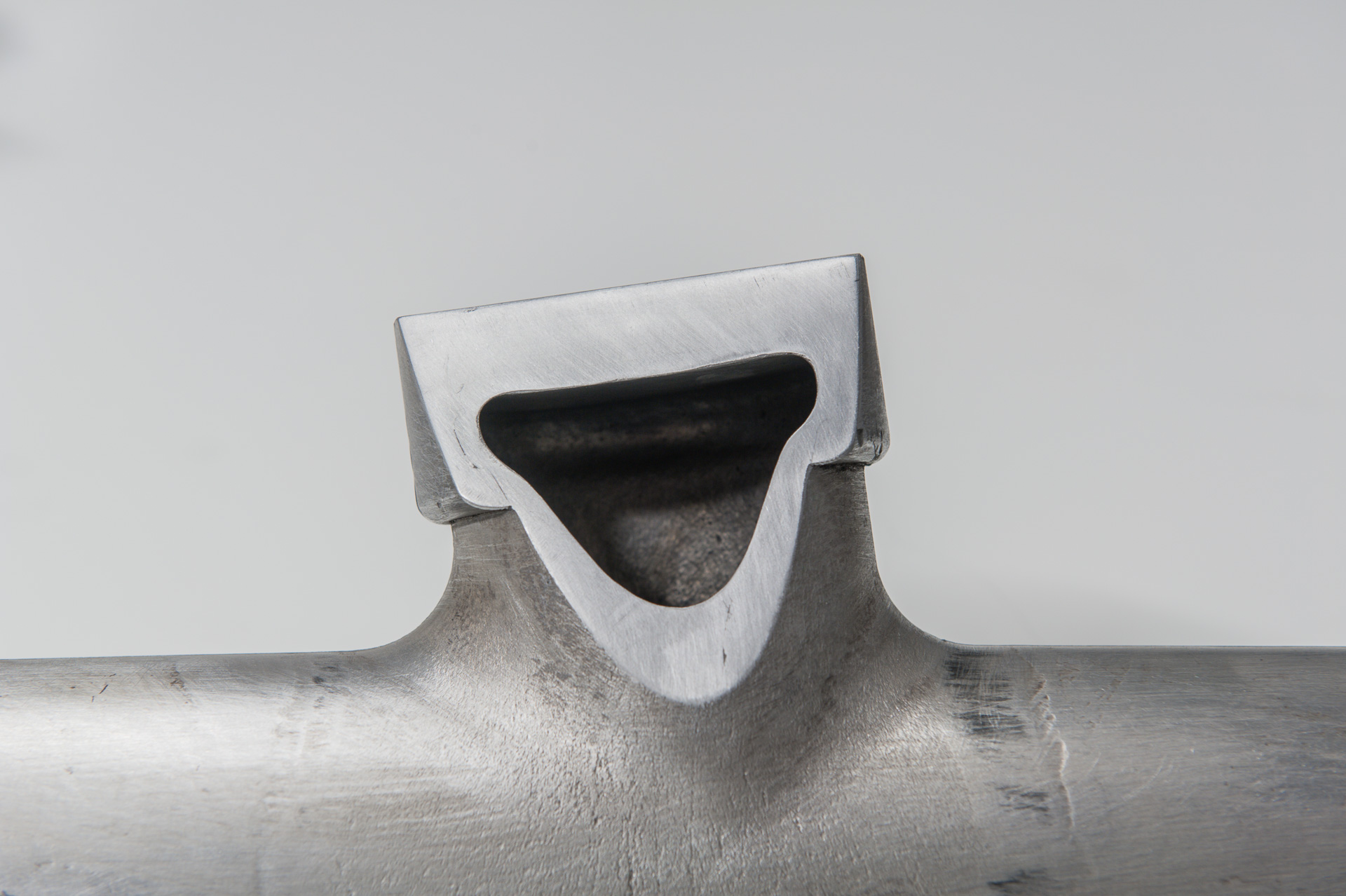
In this case a tube of AL 6082 alloy with an outer diameter of 80mm was formed into another tube and mechanically joined.